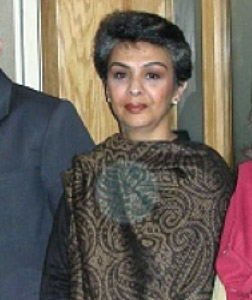I read a lot of advice for authors, and though I can’t remember the source, someone, years ago, suggested it would help make characters real if we found pictures of the people who embodied our characters. In theory, it should then be easier to describe them more vividly, more empathetically. So, in the process of writing Uncovering, I tried the idea out.
Women’s Book Club Exercise

SHAHNAZ, the protagonist, wears a brightly colored shalwar kameez (her favorite color being green), a sign of her optimistic view of life. She’s not too tall, nicely slender, and often wears a smile. The young woman in the picture is in red and white, a sparkling clean cotton with motion in the swirling pattern of lines. Also, she is showing some hair under her dupatta, suggesting her Islamic beliefs are not too conservative.

NASEER, her husband, dresses in the traditional men’s shalwar kameez, shown as he relaxes in the sun. He has a full head of dark hair, a thick moustache, and no beard. He’s comfortable in his own skin, secure in his more liberal view of Islam.

MARYAM, Shahnaz’s mother-in-law, is also prone to smiling. In her case, the smile is more that of an introvert’s, someone who keeps many of her thoughts to herself. She does love colors, which may have contributed to her vote for Shahnaz as a daughter-in-law. Maryam has come to that time in her life—in her fifties, where maintaining a lithe figure is not of much importance. She indulges, at times.

SOHAIL, Shahnaz’s father-in-law, is older than his wife and more religious. He wears the traditional shalwar kameez and in the winter months a vest to stave off the cold. He has kept a full head of hair and wears a neatly trimmed beard. He feels this is appropriate in his work as Minister of Forestry in Kashmir.

Shahnaz’s AMMI (mother) is a modern woman of the capital, Islamabad. She wears a scarf around her shoulders, available if the need arises to cover her head, and doesn’t feel obligated to obscure the gray in her hair. While more conservative Pakistani women fully cover their arms and use henna on gray hair, she is comfortable with short sleeves and the hair God has given her.

Shahnaz’s ABU (father) is a man comfortable in the small towns of Kashmir and in representing his province in the halls of government in Islamabad. His short beard and moustache fit the image of an educated man who can bend the usual rules stating that young men and women about to marry shouldn’t see or talk to each other before the wedding. But don’t push him too far!

RABIA, Shahnaz’s brash younger sister, does not usually cover her head. She’s pushing lots of limits, trying to choose her own husband and have her own way. She loves long, dangling earrings and sometimes needs to be held back by a pair of older and wiser hands.

RAJA HAIDER, Shahnaz’s brother-in-law and the chief antagonist in the story, might surprise readers, as I chose a picture of a man smiling and in western clothes. Raja Haider appears this way when he’s in Islamabad pushing his ideas of appropriate architecture for earthquake-proof buildings—especially his own home. But do note, he does not trim his beard, in his firm belief that Allah does not wish men to do so.

NOORAN, Shahnaz’s oldest sister-in-law, is shown as she is off to her medical school classes, a smart, competent woman who will make a fine physician. JAMIL, Shahnaz’s brother-in-law, is a young man enjoying life. Sure, he’ll work in finances someday, but today he’s also planning on enjoying life.


The lovely young woman in this picture is TALAAT. Shahnaz’s cousin from Detroit. She wears her hair long and well coiffed. As befits an American in the fashion industry, she sports an elegant shalwar kameez which sparkles in its decorations and draws eyes toward her. She’s a happy soul, self-confident and secure that she has a shining future.


Finally, we have pictures of the ill-fated couple: IRUM, Shahnaz’s good friend at work, and AMIR, Shahnaz’s boss. Irum is not required by the men in her life to wear black, but she does dress conservatively, as reflects her family’s beliefs. Amir is a good solid employee, an empathetic man, and a good friend.
Note: I have not included a photo of NOSHABA. Please imagine a small, slender young woman dressed all in black with face covered. She’s shy of having her photograph taken. Allah, she believes, does not approve of creating photographs or sculptures of people, as they are “graven images” like Baal and forbidden. Perhaps she’ll feel differently over time, as she lives into the more liberal visions of Islam held by her sisters-in-law.
So, now that you’ve seen the pictures, I’m curious. We all create images in our minds of the characters in books. Do yours agree with the images I’ve chosen? Any pictures you’d like to disagree with? I’d love to hear your images, your ideas of these fictional people!